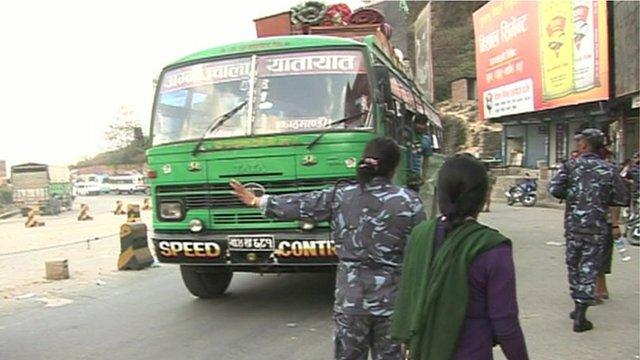Kathmandu youth circus turns tables on human trafficking
- Published
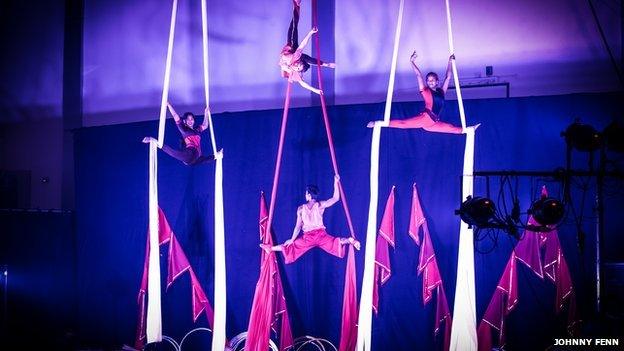
Most of Circus Kathmandu's performers are former victims of human trafficking
Bijaya Limbu was eight years old when people he describes as "agents" tricked his parents into sending him to neighbouring India for a better life. But the next four years proved to be a nightmare which he wants to forget.
Sold to a circus company in India by human traffickers, Bijaya was forced to train as an acrobat. Many in the audiences he entertained were children like him.
His suffering ended when charity workers rescued him and brought him home to Nepal.
"We were forced to train for long hours. It was difficult. Sometimes, we were beaten and abused. It was like a prison and I thought of running away from that circus on many occasions. Luckily, I was saved," recalls Bijaya, who is now a star performer with Circus Kathmandu.
Members of the circus talk to BBC News
Almost all of the 13 performers at Nepal's only contemporary circus are former victims of human trafficking.
Circus Kathmandu's biggest break is an invitation to perform at this year's Glastonbury Festival at the Circus Big Top in the UK. They are one of the star attractions this weekend.
No easy homecoming
Like Bijaya, thousands of children in dire poverty, particularly those living in Nepal's border districts, are trafficked to India every year.
They are forced to work in circus companies, as domestic servants, sex workers or to work in poultry farms and industrial units.
Activists say on most occasions the children are physically and sexually abused.
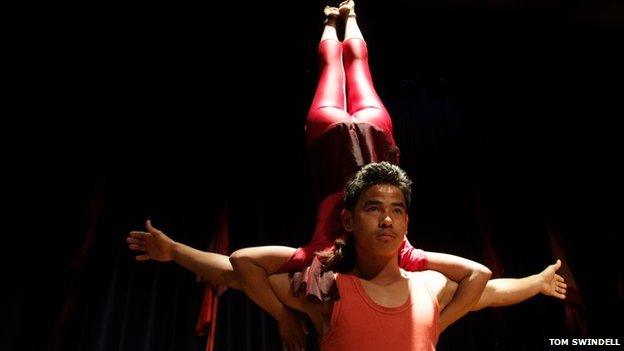
Kathmandu Circus performers blend their skills with theatre, dance and song to narrate their stories
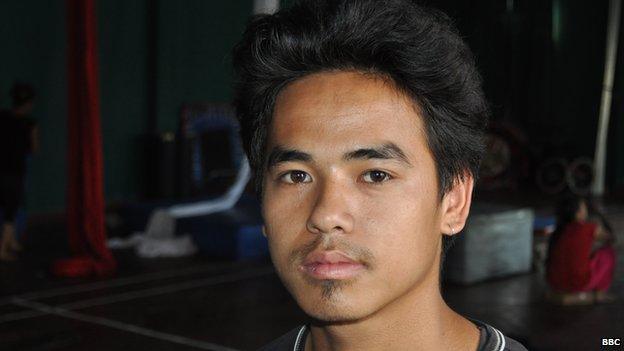
Bijaya says his parents were tricked into selling him for a better life
The homecoming was not easy for Bijaya. Like other youngsters with no formal education, it was difficult to find employment and also to reintegrate into society.
Sometimes even their families rejected them because of social stigma circus performers face.
In 2010, two British charities - Freedom Matters and The Esther Benjamins Trust - which have been working to rehabilitate rescued trafficked children helped to set up Circus Kathmandu so that they can start a new life.
Bringing together youngsters from different backgrounds who went through lots of trauma and abuse was a challenge, says Anjali, one of the performers.
"Some are talented and some are less talented. Initially, we had problems understanding each other's feelings and emotions. Now we are like a family and helping each other," says Anjali.
'Ethical entertainment'
Their latest show is 'Swagatham' - meaning welcome in Nepali. The 45-minute show reflects their lives and highlights human trafficking.
It is a fusion of circus, theatre, dance and a mix of Nepali, Hindi and English songs to narrate their personal stories.
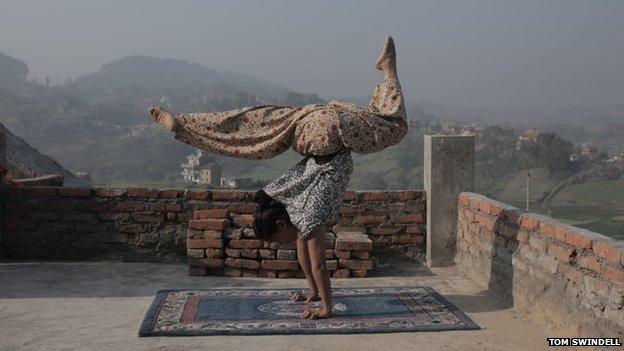
The show is a reflection of the lives of the trafficked youngsters and highlights human trafficking
"Circus Kathmandu provides what you could call ethical entertainment. It provides a salary for the troupe which means they are able to develop their circus skills, have a career and live independent lives," says Ellie Turner, one of the volunteer producers at Circus Kathmandu.
The artists perform acrobatics, hula hoop, juggling, Nepali dance, rope climbing, back flips and tumbling during the show. There are no animals.
"What we found most upsetting is how women who have survived trafficking are treated - they are often stigmatised, have usually lost out on education and have very little opportunities. Establishing Circus Kathmandu seemed like a bold and attention grabbing way to confront this," says Sky Neal, the co-founder and co-director of Circus Kathmandu.
Ms Neal says Circus Kathmandu performers are also now powerful advocates against human trafficking.
"They also do workshops for children and speak to hundreds of villagers about their own personal life and what they had gone through. The idea is to create awareness among villagers on human trafficking and why they should not sell their children," says Ms Neal, who is a circus performer in Britain.
Circus Kathmandu performs three or four times a month in schools, corporate events, theatre shows and in other places of Nepal. The revenue generated is used to support the team members. "But the project really needs donations, external in order to survive," says Ms Neal.
During their visit, the group is also performing in the House of Lords in London to raise awareness about human trafficking among British parliamentarians and officials.
New curbs
Activists estimate that around 10,000 Nepalese children are trafficked to India every year and the enormity of the problem hasn't been understood by the outside world.
"Nepalese children can easily be exploited in India and elsewhere. They cannot complain as they don't know the local language and can't run away anywhere because it's a new place and far away from home," says Shailaja CM, who works at a non-profit group in Kathmandu called Sano Paila.
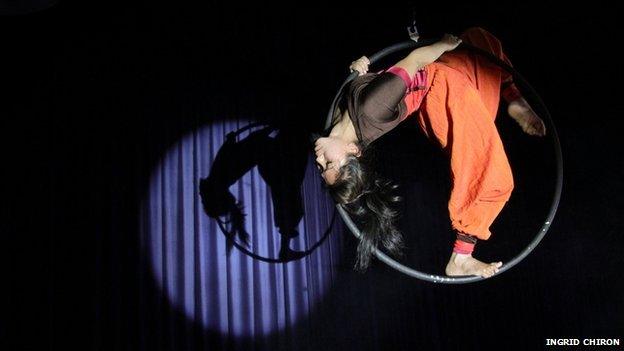
Circus Kathmandu are performing this weekend at Glastonbury Festival

Anjali says bringing together youngsters from different backgrounds initially presented many challenges
She has been involved in various rescue operations over the last 10 years and has saved more than 1,000 children, 600 of them from Nepal.
The Indian Supreme Court in 2011 ordered circuses to stop employing children. Activists say Nepal also brought in new measures to curb the problem. These steps have significantly reduced the numbers of Nepali children working in Indian circuses.
But Shailaja says Nepali children continue to be trafficked to India to work in other professions.
"India and Nepal should agree and try to monitor the entry points. What happens now is anyone can walk into India or Nepal. The government should list the areas prone to trafficking and should focus on education and other employment," she adds.
In the meantime Circus Kathmandu's young performers are excited by this weekend's Glastonbury festival. Earlier this year they appeared in Dubai. And next year they have been invited to perform in Australia where they will also hold workshops on human trafficking for aboriginal communities.
Circus Kathmandu and their message seem to be going global.
- Published23 June 2013
